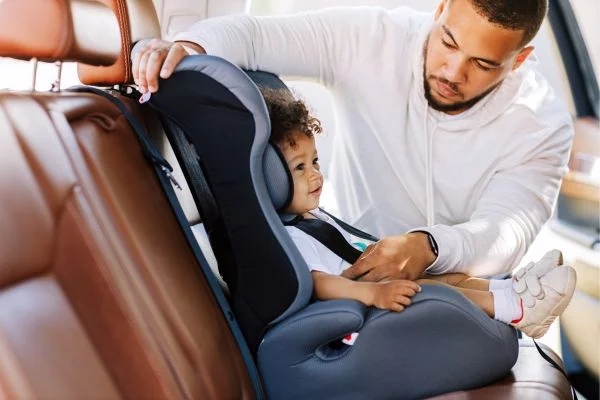As any parent will tell you, your baby’s safety is always a top priority. One way to ensure maximum safety for your infant during car rides is to ensure that their head is supported correctly. To ensure your baby is safe and comfortable in their car seat. Here are some tips on how to support baby’s head in car seat. Let’s check these!
How To Support Baby’s Head In Car Seat | Pro Tips

Choosing The Right Seat
The first step in ensuring your baby’s head is supported correctly is finding a car seat that fits them properly. Infants should be placed in rear-facing seats until they reach at least two years old. Until they reach the maximum weight recommended by the manufacturer.
Once an infant outgrows the rear-facing seat, it is time to move into a forward-facing seat with a five-point harness system. To ensure that your baby’s head is supported correctly. Choose a car seat that fits them properly and securely and meets all safety standards set by federal law.
Adjusting The Headrest
Once you have chosen a car seat for your child, it’s essential to adjust its components correctly to provide optimal support for your baby’s head while on the road. Most car seats come with adjustable headrests. So make sure you adjust their position according to your child’s height and weight. This will help ensure their neck and spine are well-supported when traveling.
Additionally, make sure there is no more than one inch of space between the back of your baby’s head and the top of the car seat. When they are seated in it. If there is more than one inch of the gap. Then you need to adjust the position of the headrest accordingly until the neck is correctly supported.
Read More: How To Loosen Straps On Baby Trend Car Seat?
Using Inserts For Added Support
Some infant car seats come with removable inserts or cushions specifically designed for babies or infants who may not fit securely within their regular-sized car seats due to their small size or lack of neck strength.
These inserts can provide extra support for babies’ heads and necks. While also helping keep them from slouching down too far in their seats. However, it’s essential to check your user instructions before using any inserts with your child’s seat. As some may require special installation instructions or limitations on use depending on age/size restrictions set by manufacturers.

Padding
If your baby tends to slump forward in the car seat, adding extra padding can help provide more support for their neck and head. Many types of infant neck support available on the market can be used in conjunction with the existing padding inside the car seat for added comfort. Alternatively, you could use a rolled-up cloth diaper or towel placed behind your baby’s neck for extra support. Make sure whatever you use won’t interfere with the straps or disrupt the proper positioning of your child’s head and neck.
Toys & Accessories
It’s natural for babies to get bored during long car rides. So providing them with fun toys and accessories can help keep them entertained. While providing additional support for their heads and necks.
A stuffed toy or cushion placed behind the baby’s head can help prop up the body. While allowing plenty of room for movement and breathability. Additionally, items like pacifiers and teething rings can provide comfort. While also helping to keep your little one distracted from potential motion sickness caused by long drives or bumpy roads.
Read More: How To Care For Baby Cheeks Skin In Winter?
Conclusion
We hope now you how to support baby’s head in car seat. Keeping your baby’s head supported correctly in a car seat is essential to ensure they stay safe while traveling by car. In addition, it’s essential to position the headrest snugly against the back of the baby’s neck so they can breathe easily. As well as make sure that any extra padding placed inside doesn’t interfere with proper positioning or breathability.
Toys, cushions, and other accessories may also be used to provide additional comfort and support without sacrificing safety standards. Just remember not to exceed manufacturer weight limits when using these items. With these tips on hand, you’ll have peace of mind knowing that you’re doing all you can to ensure your little one has a safe journey each time they take a ride!



